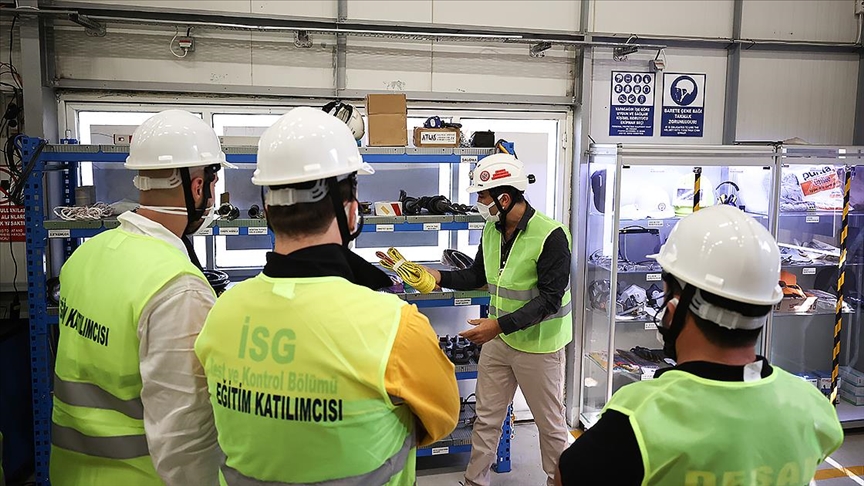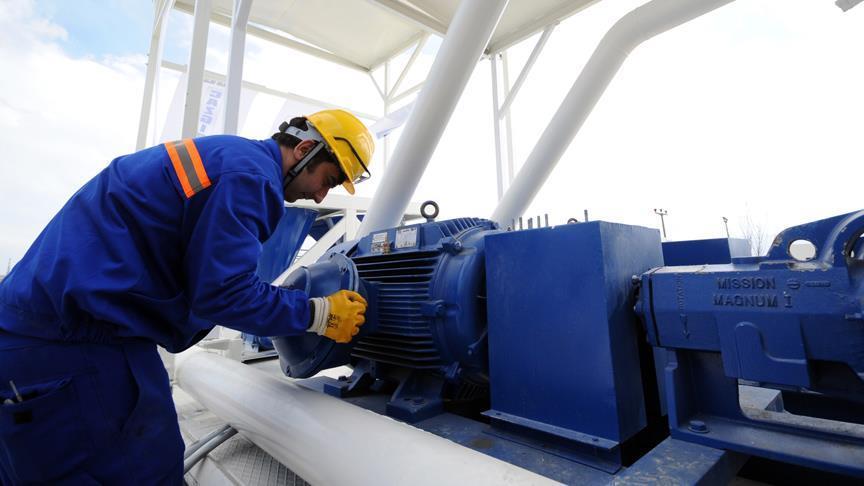Occupational Health and Safety Week is an annual event held in Türkiye from May 4 to 10 to draw attention to occupational health and safety and raise awareness in this field. Occupational health and safety refers to a systematic and scientific set of practices aimed at anticipating, recognizing, evaluating and controlling all hazards arising from the workplace or the work itself, taking into account the general environmental and societal impacts.
This field concerns the prevention of occupational accidents and diseases, as well as the protection and promotion of workers’ physical, mental and social well-being. Occupational health and safety services are multidisciplinary, involving contributions from medicine, engineering and social sciences.

Occupational Health and Safety (Anadolu Ajansı)
Purpose of the Day
Occupational health and safety is a common concern for all countries and directly relates to human health and life. A significant portion of occupational accidents and diseases are preventable; however, inadequate precautions can result in serious losses. Prioritizing human health and safety in workplaces and fostering this awareness throughout all processes plays a critical role in preventing occupational accidents and diseases. Occupational Health and Safety Week aims to protect and enhance workers’ health, implement effective management systems and cultivate a culture of safe work practices.
History and National Regulations
In Türkiye, Occupational Health and Safety Week has been organized annually in May by the Ministry of Labor and Social Security since 1987. Türkiye has ratified international conventions that set standards in occupational health and safety and aims to protect both public and private sector employees accordingly. The Occupational Health and Safety Law in Türkiye contains regulations designed to protect employees, manage risks and ensure the creation of safe working environments.
Global Perspective
Occupational health and safety is recognized globally as a critical health and safety issue. Workplace risks affect not only employees but also society as a whole. The primary objective of occupational health and safety practices is to protect workers’ health, prevent occupational accidents and diseases and maintain safe working environments. Ensuring employees’ physical, mental and social well-being, adapting work processes to worker capacities, promoting ergonomics and enforcing the use of personal protective equipment are central objectives in this field.

Occupational Health and Safety (Anadolu Ajansı)
National Practices in Türkiye
In Türkiye, occupational health and safety practices aim to ensure that employees work in healthy and safe environments. Programs include occupational health and safety training in schools and workplaces, training programs for employee representatives and risk assessment teams, on-the-job training, fire and search-and-rescue drills, workplace safety procedures, inspections of school health services, periodic checks of work equipment, supervision of boarding schools and teachers’ lodgings, zero-waste initiatives, Search and Rescue Unit activities, quality management system certification, and pandemic management.
Within the framework of school health services, inspections and guidance are provided for food establishments, and evaluations are conducted according to hygiene and infection control guidelines, with certificates awarded to compliant schools. Periodic inspections of work equipment cover electrical systems, heating boilers, fire systems, grounding, lightning protection, generators, and compressors. First aid training is provided by qualified personnel, and access to healthcare services is supported through various consultations and educational programs at primary healthcare facilities. These measures aim to protect employees from occupational risks and enhance their health.
Events and Awareness Activities
During Occupational Health and Safety Week, events are organized according to different themes to raise awareness. Trainings are provided for students and employees in schools and institutions, workplaces are visited for risk assessments and safe working environments are established. Themes are determined based on societal issues and current risks; for example, disaster management or nationwide occupational health and safety strategies may form the primary focus of the week.


